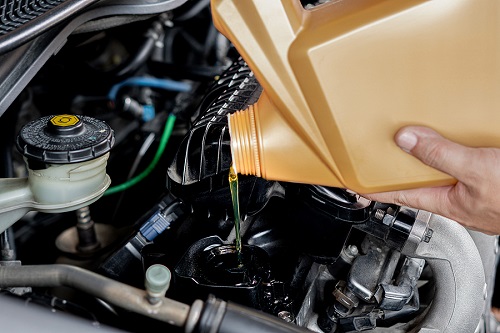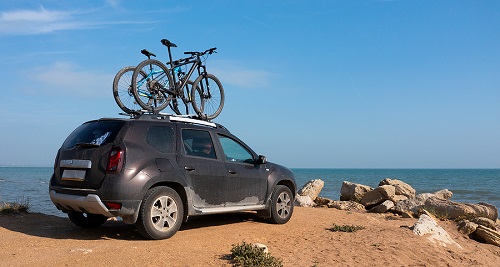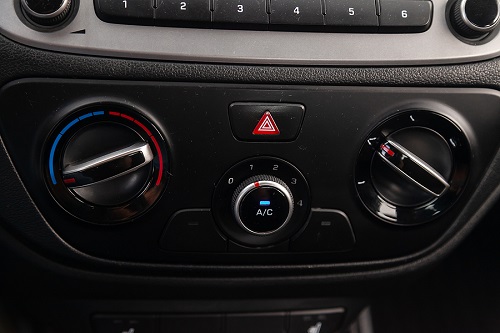Fuel prices have, thankfully, retreated somewhat from their recent peaks, but with continuing production and refining bottlenecks in the oil industry, and the turmoil caused by the war in Ukraine, prices at the pump are not going to be coming down any time soon.
Which makes it doubly frustrating when your car suddenly seems to be burning more petrol or diesel than you think it ought to. If you find yourself asking why is my car using so much fuel? Read on…
1. Have you had a service recently?

Keeping your car serviced is one of the most important ways you can help save on fuel, not to mention keeping yourself safe on the road by having all of the car’s other systems and components checked out. As far as fuel saving is concerned, having fresh air and fuel filters in place, and fresh oil too, all helps you engine to run more smoothly and efficiently. Servicing will also pick up any potential issues with the fuel injection system or the fuel pump, which may be contributing to extra fuel being used.
2. Have you checked your tyres recently?
Closely related to keeping your car serviced is keeping your tyres in tip-top shape. Tyre pressures are critical, not just for safety reasons (although they’re vital in that regard too) but for economy — it’s estimated that a 0.5-Bar drop in tyre pressures (and most tyres will run at between 2.5 and 3.0-Bar for most cars) can see your fuel consumption rise by five per cent. Equally, tyres and wheels which are out of alignment can cause more mechanical drag, wearing out the tyre faster and also causing you to use more fuel. If you’re coming up to change your tyres, consider buying a tyre which is more tuned toward economy, such as Michelin Energy Savers or Bridgestone Ecopia tyres — these have lower rolling resistance, which means you need less energy to get them turning which helps you to save fuel.
3. Have you got anything on the roof?

Have you started carrying extra loads on the roof, or on a rear-mounted bicycle rack? These can seriously cause your car to use more fuel through extra aerodynamic drag. Worse yet, if you’re carrying roof boxes or other extra loads on the car, drag increases at the square of speed so if you’re going on the motorway the effect is dramatically worse. Even the aerodynamically shaped roof boxes will cost you between 10-25 per cent more in fuel, while some research suggests that they can actually increase your fuel use by as much as 50 per cent. Even an empty roof-rack can drive up consumption by around 15 per cent. If you’re carrying bikes, try to use a boot-mounted rack rather than a roof-rack — studies by Consumer Reports in the US have shown that a roof-mounted carrier with two bikes can drive up your fuel consumption by as much as 28 per cent, and even an empty roof carrier can increase consumption by 11 per cent. Boot-mounted racks are much less damaging to economy, although that works best if you’re driving and SUV, whose boxy shape ‘shades’ the boot-mounted carrier, aerodynamically speaking. Interestingly, hauling a trailer doesn’t seem to affect economy too much — although a heavily laden trailer of course increases consumption because you’re pulling extra weight around, the aerodynamic effect is actually minimal. Speaking of weight, though…
4. Take out what you don’t need.
If you’re carrying extra weight in your car, you’re going to see worse fuel economy. It’s why so many car makers now don’t offer a standard spare wheel — the weight of the extra wheel affects the car’s official fuel economy figure… A study by vehicle data-logging company Teltrac Navman suggests that for every 45kg of extra weight you’re carrying your fuel consumption goes up by two per cent. So empty your boot, check under the seats, and get the kids to walk to school. It’s better for them anyway…
5. Check your driving style.
Your own personal driving style has more of an effect on fuel economy than anything else on this list. Drive aggressively, with lots of sudden acceleration and braking? You’re going to burn more fuel. Take it a bit more gently, observe and anticipate what’s happening ahead of you, accelerating and braking gently? You’ll save loads. You don’t have to ‘hypermile’ either. Hypermiling is an intensive driving technique which requires practice and skill, and while it can stretch your fuel economy out, some experts have actually warned against it as it can take too much of your attention away from safety-critical things. Even so, taking a little more care and attention to how you drive will save you at the pump. Also; remember that thing about a car’s drag increasing at the square of its speed? That really plays out when you’re driving at motorway speeds. Sticking to the speed limit of 120km/h can save you as much as 25 per cent of fuel on a given journey compared to running at an (illegal anyway) 130km/h.
6. Keeping cool and warm

Almost every car on sale now comes with air conditioning, but aircon can be a thirsty system, energy-wise. In fact, an air conditioning system in a car uses, on average, about 550-watts per hour, and that energy has to be supplied by the car. So, obviously, it can help to save fuel if you turn it off. At low speeds, it’s better just to open a window if you want to keep cool, but that does create more aerodynamic drag as you go faster. Generally speaking, around 80km/h is the cutoff point — below that speed it’s more efficient to open a window, above that it’s better to wind up and switch the a/c back on. Equally, heating the car in winter uses more power, but if your car has heated seats then these are a much more efficient way of staying warm — you’re warming up a single seat and occupant rather than heating the air in the whole car. It’s not a huge difference, but every little helps.